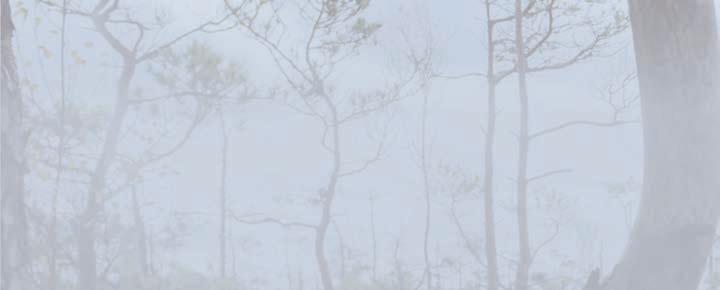
4 minute read
A MARRIAGE OF NEW AND OLD Nordic wedding traditions

by Kate Dugdale, Education and Interpretation Coordinator
Advertisement
Modern weddings throughout the Nordic countries today would in many ways look very familiar to an American audience. That’s not surprising: the American wedding industry has a global influence on trends, and American wedding customs are widely represented in film and television. Despite the growing influence of Americanized wedding practices, however, many solidly Nordic wedding traditions remain a large part of pan-Nordic wedding celebrations. From the wedding outfits and ceremony, to the cake and dancing, many Nordic customs endure.
One instantly recognizable Nordic accessory is a traditional bridal wedding crown. In Norway, traditional bridal headdresses were originally made of textiles. The metal adornments played an important spiritual and monetary role particularly in the eighteenth century.
Precious metals in bridal jewelry and headwear were important because they were a form of transportable wealth. Including metal in wedding wardrobes also had spiritual significance, due to metaphysical entities such as the huldrefolk. These otherworldly creatures were said to live inside mountains and steal both adults and babies when they were vulnerable; weddings were one such vulnerable time.
According to artist Lori Talcott, weddings were a time of transformation for the bride and groom—they were transitioning from one state of being to another, from the status of an unmarried person to that of a married person. This moment of transformation called for items to protect the marrying couple, such as metal. The headdresses fit into that folklore-imbued daily rural life, where “every season and each activity was mediated and punctuated by ritual and magic—reciprocal actions that ensured the fertility of the fields, livestock, and humans, food production, and lifecycles.” Depending on the location in Norway, the bride might wear a hat decorated with beads or a metal crown with hanging decorations, sometimes in the shape of crosses. These crowns or headdresses often feature metal lace.
The custom of wearing bridal headdresses made from textiles and metals lives on today, thanks to a surge of interest in traditional practices. In Tinn, Norway, the fashion of wearing a bridal hat almost died out. The last known instance of a bride wearing a Tinn tat—a distinctive, top hatstyle head covering—was in 1853. But in the 1990s, Talcott began working with KariAnne Pedersen, Curator of Costumes and Textiles at the Norwegian Folk Museum, to resurrect this ancient accessory. In 1994, Talcott and Pedersen’s new-construction Tinn hat made its debut in an exhibition at the Museum. Six years later, it was worn by a bride for her wedding at Volun farm, in Tinn, Telemark. After a 147-year slumber, the Tinn hat tradition was wide awake.
In Sápmi, brides might opt to wear the traditional costume of the Sámi people— a gákti or kolt—on their wedding day. Gáktis are made of leather, sinew, wool, and occasionally silk and velvet; the specific designs vary from community to community. Interestingly, one element of the gákti is a coded message. On some gáktis in the north Sámi area, the shape of the belt buttons indicates marital status— square buttons mean that the person is married, while unmarried individuals wear round buttons.
In Sweden, custom dictates that the bride and groom walk down the aisle together. This tradition is part of the established customs of the Church of
Sweden, and symbolizes the marrying couple entering their new life together. However, this tradition has been impacted by the growing popularity of American wedding practices. When Crown Princess Victoria married Daniel Westling in 2010, she opted to blend the two customs: Her Royal Highness walked down part of the aisle with her father, King Carl XVI, where she was met by her soon-to-be husband to walk the rest of the way together.
Much like in the United States, dancing is a big part of a wedding party in the Nordic countries. In Denmark, the newlyweds’ first dance is a bridal waltz, which custom demands should takeplace before midnight. During the waltz, the guests form a circle around the couple, clapping along to the music and slowly closing ranks. This ends when the couple has no space left to dance in. A famous example of this tradition was included in the 2004 wedding of Danish Prince Frederik II and his Australian bride, Princess Mary.
Waltzes play a role in traditional Finnish weddings, too. Like Danish weddings, the first dance is often a waltz—but the end of the wedding celebration might include a “weaning-waltz.” In a weaning waltz, all the female guests waltz with the bride one by one, while the male guests take turns dancing with the groom. At the end of the dance, the bride and groom are reunited.
Despite their regional differences, one similarity throughout many Nordic weddings is the wedding cake. Known as kransekake in Norway and Denmark and kransakaka in Iceland, this tall “wreath” cake is made by layering individual rings to form the tall conical structure, which is then held together by royal icing. Traditionally, these cakes have at least eighteen layers. In addition to being delicious, those layers provide a bit of fun for the wedding guests. One tradition is to have the newlyweds lift the cake by the top layer: the number of rings that remain attached to the top layer is supposed to predict how many children the couple will have.

Although American customs may be influencing Nordic weddings, Nordic weddings are not without their own global influence. The word “honeymoon” has its roots in the ancient Scandinavian practice of drinking mead during the first month of marriage. Drinking mead together for thirty days has two different functions. Mead (or fermented honey) was symbolic for celebrating the sweetest part of marriage. More practically, another reason for drinking mead every night was that it improved the likelihood of a swift conception.


Despite American influence, many established traditions are still beloved and thriving parts of Nordic wedding ceremonies and celebrations. And whether strictly traditional or more modern blend, there is one thing in common among Nordic and American weddings: they are usually a party.



Genealogy Programs Flourish at Museum

The Museum’s popular Nordic Genealogy Program proved a virtual hit throughout 2020. These forty- ve-minute, one-onone consultations with Kathi McGinnes of the Seattle Genealogical Society frequently sold out for months in advance of appointment times. The Museum will continue to o er virtual genealogy consultations and other online resources this year.
The rst Virtual Nordic Genealogy Conference in September 2020 attracted attendees from twenty-four states and three Canadian provinces. One of the most popular sessions—“Sámi Identity and Genealogy: What Does it Mean to be Sámi?”—was taught by Paci c Lutheran University Professor of Nordic Studies Troy Storfjell, who identi es as Sámi. Storfjell helped found the interdisciplinary Native American and Indigenous Studies Program at PLU. This session is available to view for free on the Museum’s YouTube channel.
The Conference can be viewed online through September 2021, with Museum Members enjoying a signi cant savings. Interested parties can learn more and register at nordicmuseum.org/genealogyconference.









